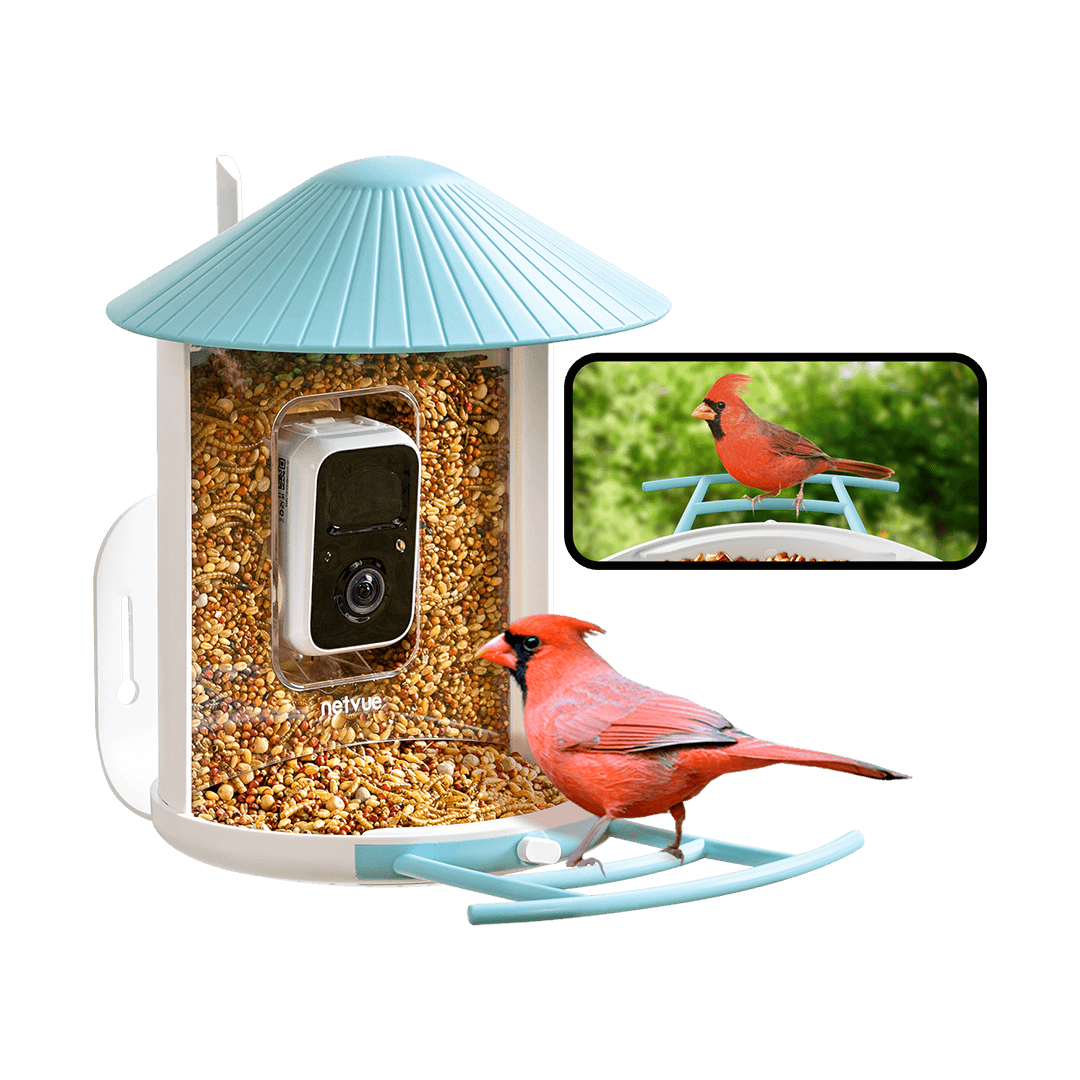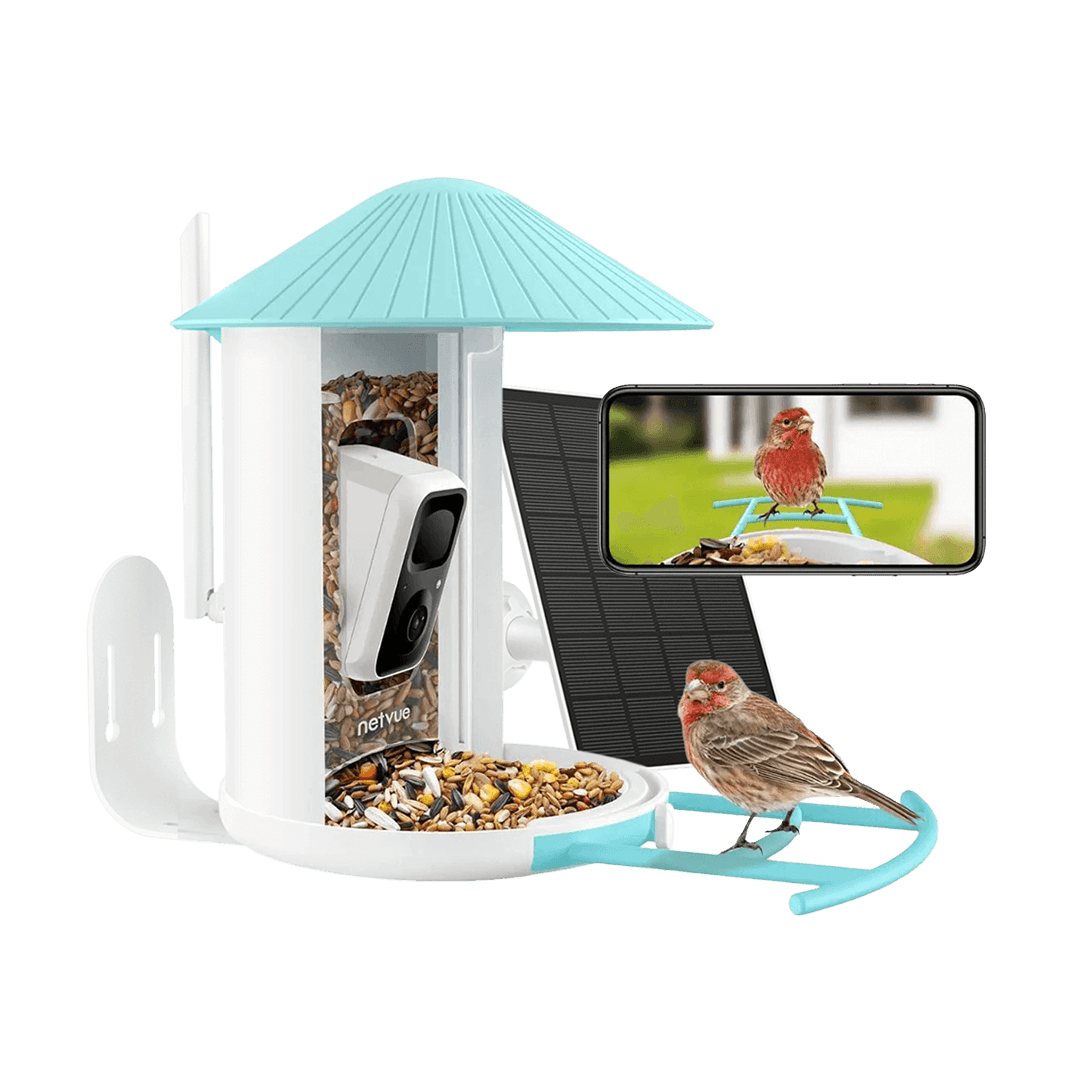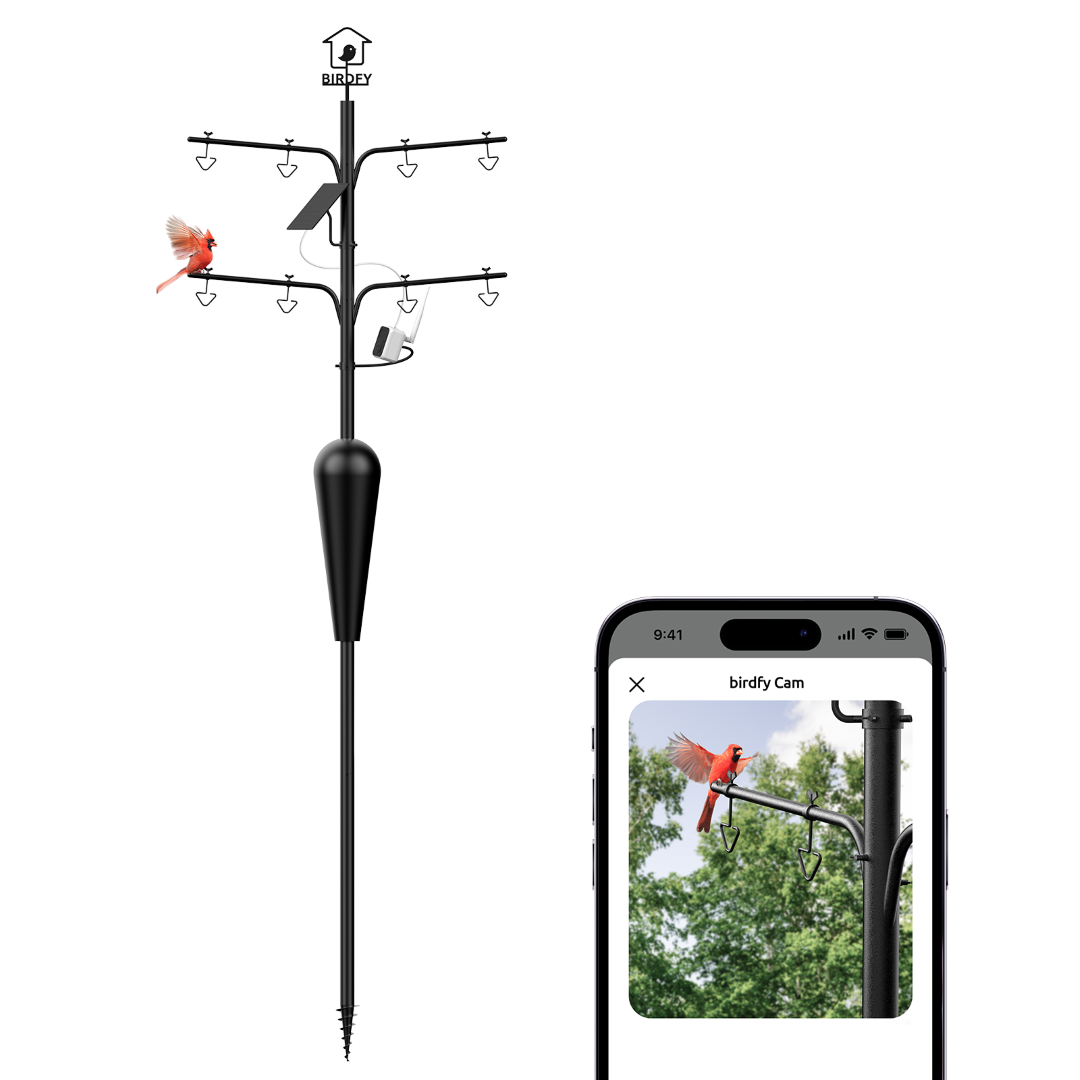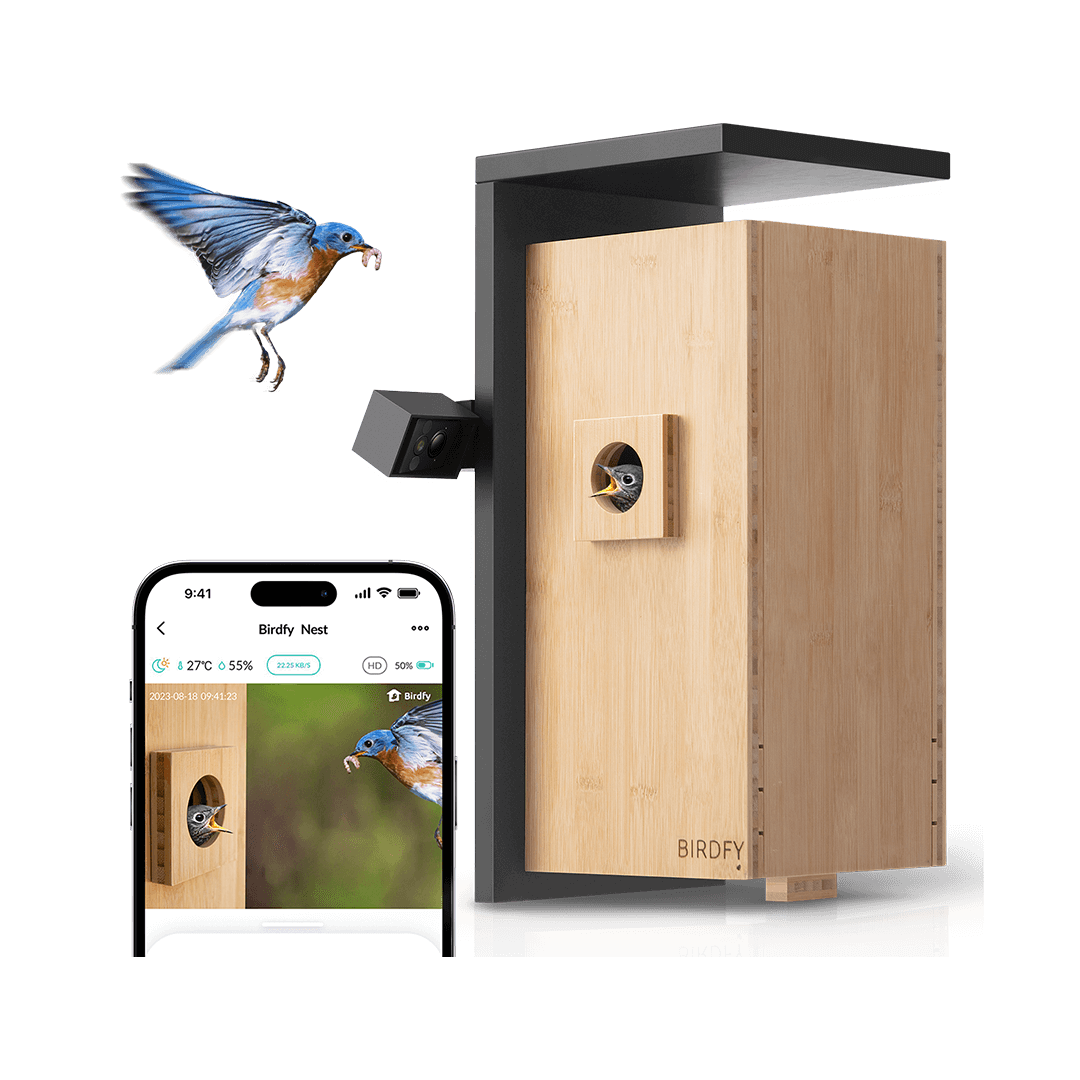My winter garden: Meeting new feathery friends
Is bird watching dull? Far from it! Just when you think you've seen all the birds that frequent your area, new species may suddenly appear in your garden. This usually happens because of the ever-changing seasons, making bird watching interesting all year round. But keep in mind: different birds bring different needs and preferences, so adapting your garden accordingly is key to welcoming a variety of birds year-round.


Different seasons, different birds
You might have noticed, especially if you actively observe the birds visiting your garden, that a particular species of bird can be a regular visitor for months and then disappear for several months. This is likely related to the changing seasons. Many birds don't reside in the same place year-round, leading to variations in the types of birds that visit your garden throughout the year. If you live in an area where winter temperatures can become extremely cold, certain birds may migrate as soon as the temperatures begin to drop. Conversely, if you reside in a region with mild winter temperatures, you may notice different visitors in the winter who have fled colder areas.
The birds you can welcome in each season depend largely on your location. Especially if you live in areas with temperatures significantly lower or higher than average, you'll observe significant differences in the birds visiting your garden as the seasons change.
Needs change throughout the seasons
Even if, like me, you live in a region with a climate that doesn't experience extreme temperature fluctuations, you can still notice changes in the birds visiting your garden with the shifting seasons. This is most easily observed using a birdcam; through the photos and videos you capture, you quickly realize that changes are taking place.
The absence of certain birds and the appearance of others doesn't always mean they've migrated to another country or region. Birds' needs also change throughout the seasons. For instance, birds like the nuthatch may stay in their territory year-round, but their behavior and the specific places they visit can vary during the different seasons. So, it could very well be that certain birds are still hanging around the neighborhood but might be skipping your yard during a specific part of the year because there are spots elsewhere that suit their needs better at that time.
In my garden, the blackbird is a perfect example of a bird I only get to greet during a small part of the year. In spring and summer, it's hardly visible in my garden, while in winter, it becomes a daily visitor. It seems that during summer, it finds ample food in the wild and sees no need to frequent gardens too much. In winter, however, when food is less readily available, a visit to a garden with extra feed becomes a crucial survival strategy.
So, during winter, to my great delight, I welcome a substantial number of blackbirds to my garden, while in summer, house sparrows become daily visitors. Conversely, these sparrows hardly visit in winter. The explanation is likely simple: there are few shrubs and trees in my vicinity that stay green throughout the year. Many birds, especially house sparrows, prefer greenery and seek shelter. In my case, during winter, they find it elsewhere.


Influence on garden visitors
In the case of house sparrows, a bird I find charming, you can influence whether they visit your garden. When I discovered that a lack of greenery scared them away in winter, I started planting bushes and trees that maintain foliage throughout the year. It takes time for this to have an effect, the plants will need to grow and the birds must start to notice the changes, but I hope to have created a place where birds seeking dense foliage will stay year-round within a year or two. Make sure you choose native plants when creating a greener garden, by the way. Native vegetation provides natural food sources and creates a familiar environment for the birds in your region. Different bird species have specific preferences for the types of plants they like to forage in or nest among. Research the native plants in your area and strategically plant them to cater to the needs of various birds. Also, going for native plants is a big win for other critters, like insects. The animals and plants that naturally hang out in a specific area work together like a well-oiled machine and really rely on each other. So, by choosing native plants, you're not just giving a thumbs up to the birds but basically throwing a party for Mother Nature as a whole.
Understanding the birds that visit your garden throughout the year is a good idea. It can help you adapt your garden to encourage birds that you normally see in a particular season to stay all year round. For example, I found that blackbirds have a significant need for water in summer. So, offering water might encourage them to visit, especially during hot summers, when natural resources are sparce. They may still prefer more natural surroundings with plenty of greenery and large grassy areas, but by offering water, you increase the chances of them at least briefly visiting your garden. Additionally, you assist other birds that may struggle to find enough water. While water is essential for birds throughout the year, it becomes especially critical during dry periods or extremely cold ones. Installing bird baths or small water features provides a reliable water source, encouraging birds to visit your garden regularly. Consider adding a heating element during winter to prevent water from freezing, ensuring birds have access to water even in colder months. When all natural water sources in the area have turned into ice, they will be very thankful to find some fresh water in your garden.
Different feed for each season
As the seasons change, I also adjust the bird feed in my garden. I do this partly based on what birds need during different seasons. In winter, most birds need fatty, nutritious foods to withstand harsh conditions. In summer, I provide more refreshing, moist foods like fruit, which birds find beneficial on warm days.
I also consider the specific birds that visit my garden during a particular season. Once I spot a different type of bird on my birdcam, I delve into information about the visitor. What is the best food to offer, and where and how should I place it? The latter is an essential factor I discovered later. I used to offer the feed I bought specifically for 'my' blackbird on a high feeder. The blackbird would visit to eat but never stay for long. When I found out that this bird preferred feeding from the ground, I set up a feeder there. I also installed a camera to see if my idea worked, and indeed, blackbirds started visiting more frequently. Interestingly, they stayed much longer and more peacefully than on the high feeder. It's advisable to shield a ground feeding area with a cage to prevent larger birds from becoming a nuisance and to allow smaller birds to eat peacefully without fearing local cats.
Acquiring and applying knowledge
While you can only partially control the types of birds that visit your garden during different seasons, you can exert some influence. It greatly helped me to gather information and knowledge about all (possible) visitors to my garden. It doesn't have to happen all at once, but make sure you keep learning along the way. You’ll definitely be rewarded for that!
If you spot a 'new' bird in your garden, take a moment to learn about it. Is it a migratory bird, present only part of the year in your region, or is it a permanent resident? This knowledge helps you know when to expect the bird and prevents disappointment if it suddenly stays away for months. Also, educate yourself about their dietary needs: what is the best food for this bird, and how and where should you offer it? If you want to monitor whether the bird is happy with what you provide and if it visits more often, hanging a bird camera nearby is a good idea to see if your efforts yield results.
If you see birds flying in local parks or in your general neighborhood that haven't visited your garden yet, that's another good reason to learn about the species. Find out about their needs, both in terms of food and potential planting. If you want to welcome a particular bird to your garden, it might be worth making some adjustments. Again: use native plants as much as possible.
By acquiring knowledge about more and more birds and putting that knowledge into practice, you slowly transform your garden into a welcoming space for various birds all year round. It takes time, and patience is crucial as results are not always immediately visible. However, it's always a thrill for me to see a bird on my birdcam that I haven't greeted before. Mission accomplished!






